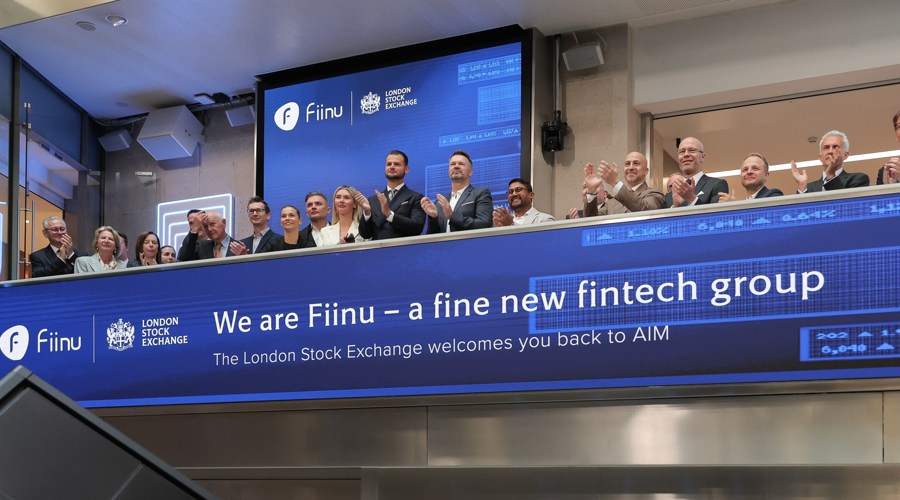Companies of all sizes are scrambling to invest in artificial intelligence (AI). From data centers, semiconductor chips, cloud computing, and large language models (LLMs), the prospects of generative AI has no bounds.
At the center of all the action sits Nvidia (NASDAQ: NVDA). After adding one-trillion dollars of market cap in less than two months, it’s clear that investors cannot get enough of Nvidia stock.
Ark Invest CEO and outspoken technology investor Cathie Wood penned a shareholder letter earlier this month outlining why she sees some turbulence ahead for Nvidia. Let’s break down Wood’s argument and assess the warning signs she’s posing.
A cautionary tale
In her shareholder letter, Wood makes an apt comparison between Nvidia and Cisco. During the early days of the internet in the 1990s, Cisco enjoyed an extended moment in the spotlight thanks to the company’s breakthroughs in routers and computer hardware equipment.
Unsurprisingly, investors poured into Cisco stock, eventually propelling Cisco to the world’s most-valuable company. Today, Cisco isn’t even in the top-50 most-valuable companies measured by market cap.
On the surface, I understand the comparison Wood makes. Demand for Nvidia’s graphics processing units (GPUs) and data center services is abnormally high thanks to urgency-driven investments surrounding the AI narrative.
Wood warns that rising competition could spell trouble for Nvidia, and it could be here sooner than later. While this may be true, I’m not completely sold on this argument. Understanding the underlying details around increased competition is important for investors to explore.
Competition is rising, but…
In the aftermath of the dot-com bubble in the early 2000s, Cisco failed to innovate at the same pace as its competition. As a result, computing hardware became a commoditized product, putting Cisco in somewhat of an existential crisis. While Cisco still operates a successful business, it’s clear the company ultimately dropped out of favor with investors.
I see things much differently with Nvidia. For starters, designing semiconductor chips and high-performance compute is much more sophisticated than producing routers. In other words, while Cisco’s hardware was innovative in the early days of the internet, it didn’t take long for competing products to emerge.
Nvidia absolutely has competition — namely, from chip makers Advanced Micro Devices and Qualcomm. Moreover, tangential competition is quickly entering the scene from the likes of Microsoft, Amazon, and even Tesla. While I agree with Wood that intensified competition could impact demand for Nvidia’s chips, I don’t think she’s giving the company enough credit.
Investors should realize that unlike Cisco, Nvidia has optionality. The company is diversifying its model outside of semiconductors and is building an end-to-end AI platform.
…Nvidia has a plan
Although the chip arena has a rising number of entrants, Nvidia still holds a competitive advantage. The company is a pioneer in the GPU space, providing Nvidia with an enviable first-mover position. While it’s plausible that Nvidia could lose some of its pricing power and market share over time, I don’t see the competition as too much of a threat.
Moreover, with a whopping $26 billion of cash on the balance sheet, Nvidia has been aggressively investing in all sorts of areas across the AI spectrum in an effort to expand beyond chips. Two high-profile applications that Nvidia is exploring include humanoid robotics and enterprise software.
Nvidia recently joined OpenAI, Microsoft, and Intel in a $675 million funding round for robotics start-up Figure AI. On top of that, the company is currently an investor in Databricks — the world’s most-valuable privately held software business. I see both of these partnerships as ways for Nvidia to bolster its under-the-radar software operation — which is already a one-billion-dollar revenue run rate business.
Could Nvidia end up as the next Cisco? Of course, anything is possible. I think what’s more likely is that if Nvidia’s bets in robotics and software don’t pan out, then the company could begin to experience decelerating growth. A situation like that could absolutely cause some panic-induced selling from investors.
But in my opinion, I don’t see that happening. I am encouraged and impressed by all of the moves Nvidia is making outside of chips. While the stock is certainly enjoying some momentum, I think Nvidia can keep it up — and I’m optimistic that the company’s best days are ahead.
Should you invest $1,000 in Nvidia right now?
Before you buy stock in Nvidia, consider this:
The Motley Fool Stock Advisor analyst team just identified what they believe are the 10 best stocks for investors to buy now… and Nvidia wasn’t one of them. The 10 stocks that made the cut could produce monster returns in the coming years.
Stock Advisor provides investors with an easy-to-follow blueprint for success, including guidance on building a portfolio, regular updates from analysts, and two new stock picks each month. The Stock Advisor service has more than tripled the return of S&P 500 since 2002*.
See the 10 stocks
*Stock Advisor returns as of March 21, 2024
John Mackey, former CEO of Whole Foods Market, an Amazon subsidiary, is a member of The Motley Fool’s board of directors. Adam Spatacco has positions in Amazon, Microsoft, Nvidia, and Tesla. The Motley Fool has positions in and recommends Advanced Micro Devices, Amazon, Cisco Systems, Microsoft, Nvidia, Qualcomm, and Tesla. The Motley Fool recommends Intel and recommends the following options: long January 2023 $57.50 calls on Intel, long January 2025 $45 calls on Intel, long January 2026 $395 calls on Microsoft, short January 2026 $405 calls on Microsoft, and short May 2024 $47 calls on Intel. The Motley Fool has a disclosure policy.
Cathie Wood Is Sounding the Alarm on Nvidia. Here Are 3 Things Smart Investors Should Know was originally published by The Motley Fool







































